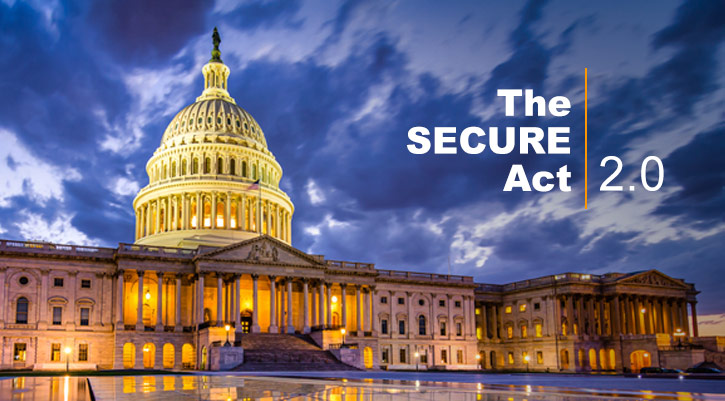January 19th, 2023
SECURE Act 2.0: What You Need to Know
Posted in: Featured Tax Law Tagged: David S. De Jong
Author: David S. De Jong

On December 29, 2022, President Joe Biden signed the SECURE Act 2.0 into law as part of the Consolidated Appropriations Act. More comprehensive than the original SECURE Act of 2019, here are a handful of its major provisions:
- The age for commencement of minimum distributions from an Individual Retirement Account (IRA) or employer sponsored retirement plans, such as a 401(k), has been raised in 2023 to 73 for those not yet 72 as of December 31, 2022; the age jumps to 75 in 2033. As under prior law, an individual who continues to work need not take from a current employer’s retirement plan until cessation of services.
- The excise tax for failure to take a minimum distribution has been reduced from 50 percent to 25 percent effective 2023 (10 percent for IRAs if timely corrected). Additionally, IRS can now only collect the penalty within the three-year statute of limitations which formerly was unlimited if the penalty was not declared.
- Taxfree rollovers from 529 plans open at least 15 years to Roth IRAs are allowed effective 2024 up to the Roth limit annually and up to a $35,000 maximum lifetime withdrawal. This will serve to avoid tax and penalty if 529 funds remain upon education of all of one’s children.
- A Roth 401(k), like a Roth IRA, will not require lifetime withdrawals effective 2024. A couple will not need to withdraw any Roth money during the lifetime of either spouse.
- Repayments of student loans will be treated as elective deferrals for purpose of employer matches, effective 2024. This will facilitate young employees with student debt receiving “matching” employer contributions in certain 401(k) plans where their lack of an elective deferral has kept them from receiving employer contributions in the past.
- The “catch-up” amount for employee elective deferrals will be increased effective 2025 for those aged 60-63. For four years, employees may make in most cases 50 percent larger elective deferrals than those 50-59 and 64 and above. However, effective 2024, all “catch-up” deferrals must be in after tax dollars.
These provisions are but a sampling of the numerous changes in the retirement plan law for employers, employees and the self-employed. For more information, contact David De Jong or Sarah Broder.





